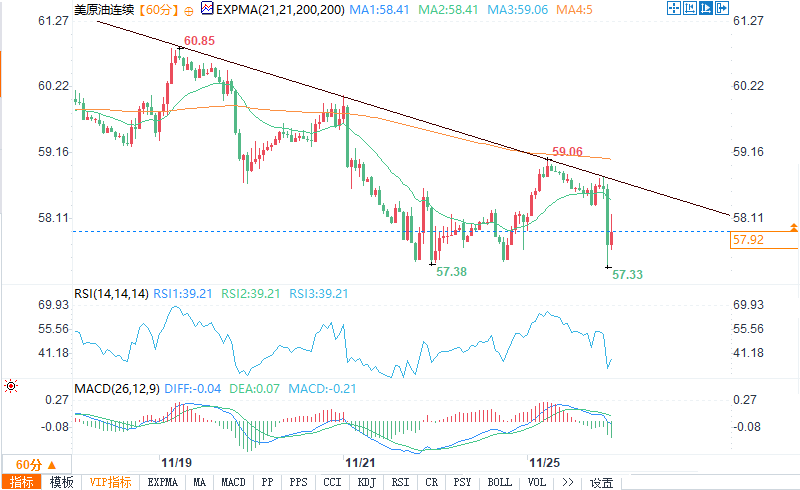Traders are pessimistic about the rebound momentum, and crude oil prices have fallen.
2025-11-25 21:58:02

Professional traders have not yet confirmed a bottom has formed, but the underlying logic is clear: the 50-day moving average is at $60.35 per barrel, and the 200-day moving average is at $61.23 per barrel, forming substantial resistance levels. Unless a major news event prompts traders to reassess the supply situation, sellers will remain in control during any rebound.
Oversupply concerns are driving oil price forecasts downward.
The core theme of the current crude oil market remains oversupply. While traders continue to monitor developments in Ukraine, market performance has not reflected expectations of a significant reduction in Russian crude oil exports. In India, private refineries, such as Reliance Industries, have reduced their purchases of Russian crude oil to mitigate the risks associated with sanctions related to Rosneft and Lukoil.
Analysts are outspoken about this issue: the oil supply and demand situation will be loose in 2026. Deutsche Bank predicts that the oil supply surplus next year may reach 2 million barrels per day or even higher, and it will be difficult to return to a supply shortage in the short term. Although it is too early, these oil price forecasts are all bearish, and traders' actions reflect this trend.
The market shows a willingness to rebound, but buying interest is insufficient.
Oil prices rebounded 1.3% on Monday, mainly as traders reassessed the probability of a peace agreement in Ukraine, but this rally failed to trigger further buying. While the market is willing to believe that supply tightness may be brewing, data continues to point in the opposite direction. Until it becomes clear whether the latest US and European sanctions will truly impact Russian exports, crude oil prices will likely remain range-bound.
There is a slight positive factor at present: market expectations for a rate cut by the Federal Reserve at its December 9-10 meeting are growing. A rate cut may marginally improve oil demand, but given the continued oversupply looming over the market, buyers are not in a hurry to chase higher prices.
Technical factors still dominate market trends.
The short-term technical picture remains unchanged: oil prices may retest $57.38/barrel, or even further down to $55.91/barrel; if buyers can hold prices above $59.23/barrel, they could potentially challenge the 50-day moving average resistance level of $60.35/barrel again. However, traders generally believe that the 200-day moving average at $61.23/barrel is a stronger resistance level, and unless there is a significant shift in market sentiment, breaking through this level will be difficult.
The bearish outlook remains unchanged unless unexpected news emerges.

(WTI crude oil 1-hour chart source: EasyForex)
Key takeaway: The market is attempting to stabilize, but concerns about oversupply are having a far greater impact than any bullish catalysts. Unless news emerges that substantially tighten supply, the path of least resistance for crude oil prices remains to the downside.
- Risk Warning and Disclaimer
- The market involves risk, and trading may not be suitable for all investors. This article is for reference only and does not constitute personal investment advice, nor does it take into account certain users’ specific investment objectives, financial situation, or other needs. Any investment decisions made based on this information are at your own risk.





















